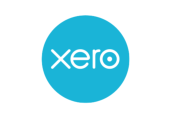How to Choose the Right Server?
In our modern, tech-savvy landscape, it’s almost unthinkable for a business to operate without incorporating some form of server into its network or IT infrastructure. Servers have become integral to daily operations, enabling efficient data management, workflow automation, and a host of other essential tasks. But when faced with the decision of selecting between a physical server and a virtual one, things can get a bit complicated. Both these options come with their unique set of features and benefits, and understanding these can be pivotal in making an informed choice. So, let’s delve deeper into the pros and cons of both physical and virtual servers, aiming to provide clarity on this intricate decision.
Physical Servers
Physical servers, also known as dedicated servers, are computing machines on which data is stored and read. These machines are equipped with a specialised operating system that has the capability to share the resources as per the request of client machines. They are placed in a server room or in any other colocation facility (data centre) maintained by third-party vendors. Physical servers are mostly owned, managed and regularly maintained by dedicated IT teams at companies. A few common examples of physical servers are the file, print, applications, and email servers.
Pros of Physical Servers
- IT teams have access to a dedicated server resource 24/7 all the year round. This can prove to be advantageous for businesses with high demand or critical operations.
- Physical servers can be placed at any preferred location, whether onsite or at a colocation centre.
- They can be completely customised and configured as per the specifications and business requirements.
Cons of Physical Servers
- Physical servers are associated with relatively high costs of purchase, maintenance, and replacements in case of hardware failure.
- The responsibilities of server setup, configuration, and maintenance on a continual basis have to be undertaken by the internal IT team.
- In case of difficulty with configuration or repairs, expert help of IT support may be required.
- Once the maximum workload on a server is reached, it may not be easy to scale storage as per the requirements without replacing the hardware.
- As is the case with all kind of physical machines, these servers require physical or colocation space.
Dive into the comparison of physical and virtual servers and make an informed decision now! Ask a dork.
Virtual Servers
Also known as VPS or virtual machines, are designed to mimic the functionalities of dedicated servers. Virtual ones are set up on one server, and can easily replace dedicated servers when the need of having multiple servers arises. The act of placing multiple “virtual servers” on physical equipment is called virtualisation. Virtualisation allows physical server resources to be split between multiple workloads and offers maximum efficiency in terms of performance and cost savings. Server virtualisation is usually used in cloud-based environments, or on servers that are owned, maintained, and located off-site. Some of the most common approach organisations can take to switch to virtualisation is by hiring a hosting vendor who offers secure cloud services.
Pros of Virtual Servers
Upfront costs are less compared to the dedicated servers since there are no requirements to purchase hardware.
- Lifetime costs on configuration and maintenance are also potentially lower.
- Expert assistance is available for setup, configuration, maintenance and software licenses.
- Virtual servers reduce the need for an in-house IT-team.
- They increase workload efficiency through consolidation.
Cons of Virtual Servers
- Virtual servers have higher recurring monthly costs, as compared to a high upfront cost associated with physical servers.
- There may be issues related to application compatibility that would require assistance from knowledgeable vendors.
- Upgrading the agreement plan in small increments may not be possible as that largely depends on individual vendor policies and service level agreements (SLAs) they offer.
- You can no longer be in full control of your physical server and the applications running on them.
Upgrade your business’s IT infrastructure with the power of virtual servers. Boost efficiency, and cost-effectiveness today! Learn more.
Which Type of Server is Right for My Business?
A physical server delivers 10% to 20% more than a virtual server, and at the same time costs 10% to 20% less. There are many organizations using a hybrid approach these days, which is nothing but using a combination of both physical and virtual servers. This helps them enjoy the best of both worlds.
However, if you would still like to choose between the two instead of going for the hybrid solution, it is important for you to understand that the final decision would largely depend on a number of factors, including the budget, projected growth in workload, data type, resources, information security, and space control, among many others.
The Final Word
If you are looking for server solutions in Brisbane, contact us for the best advice that you will find on what server will be the best for you and your business. Good luck!



 Upfront costs are less compared to the dedicated servers since there are no requirements to purchase hardware.
Upfront costs are less compared to the dedicated servers since there are no requirements to purchase hardware.

























